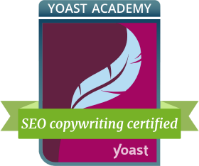
“What is a hashtag and how do I use it?”
This is a question I often get during my Getting Started in Social Media talk. Here’s what you need to know about hashtags and how to use them effectively.
All hashtags start with the familiar ‘#’ which, to those of us who remember touch tone phones, is also known as the pound sign. According to Uriel Alvarado on the Intelligent HQ blog, they were cooked up by Twitter user Chris Messina in 2007 and later embraced by Twitter. Hashtags allow users to engage in real-time conversations. With hashtags, you can create topics and group your own tweets with others on a similar theme. The tags can also be used as a symbol of belonging to a group with the same interest or opinion. A popular – or trending – hashtag can also indicate that something is trendy, cool, or topical.
Social Media Sites Supporting Hashtags
Today hashtags are used on many social media channels, not just Twitter. The graphic below shows some of the sites that now support hashtags.
Why use a hashtag?
Hashtags can be useful even to those who aren’t social media wonks or pop culture enthusiasts. They can be used to publicize news, especially fast-breaking or urgent stories (think #ArabSpring, which broke on Twitter before the national media picked it up).
Businesses can use hashtags to advertise, promote an event, or start a conversation with customers and followers. Consumers can share positive or negative experiences with a company or brand via hashtags. The #loveVerizon and #hateATT hashtags are two recent examples of consumer experience sharing.
Using a hashtag in a social media update gives context and content to your post. For example, if you were participating in my Getting Started in Social Media talk at the American Appraisers Association National Conference in New York City, you might have posted this update to Twitter:
Learning a lot about using #SocialMedia for #marketing my appraisal practice from @LMKasprzak at the #NatlConf2013
Someone reading the above post would know you were at the conference and, more importantly, that you were learning something to help you advance your appraisal practice. The reader could also click on the #NatlConf2013 hashtag and see other posts about national conference events.
If you create a hashtag, you can register it on Hashtags.org, which also provides tracking.
Twubs.com is another service that allows you to register and follow hashtags. Although you can’t prevent others from using your hashtag, it may be useful to claim a hashtag that could be integral to discussion around a trademark, promotional campaign, or event, says Rebecca Murtagh on the Search Engine Watch blog. When you optimize conversations, content, and updates with hashtags, they become more visible to others on social media platforms and search engines, points out Murtagh.
Hashtags are also a great – and free! – research tool. If you want to know what your customers are talking about, what your competitors are doing, or how the media is treating a specific topic related to your product or service, track hashtags, says Murtagh. They are extremely useful in identifying the frequency and reach of topics, discussions, and tapping into audience sentiment.
Other ways businesses can use hashtags include:
- Tracking mentions on the social web
- Finding influencers engaged in a topic.
- Attending a conference virtually and expanding your network with people in your industry
- Branding a presentation, webinar or keynote speech
- Participating in Twitter Chats on topics of interest or in your industry
- Dealing with a crisis
- Building a community around a brand
- Extracting customer insights
Using Hashtags Effectively
Now that you understand what hashtags are and how they can be used, let’s turn to social media expert John Cade for some pointers on how to create an effective hashtag:
- Skip punctuation, spaces and hyphens. Your hashtag should read #artappraisalservices not #art-appraisal-services. Anything following the first punctuation mark will show up as text that is not clickable, and therefore is not actually part of the hashtag.
- Keep hashtags short. Shorter hashtags are easier to remember and are easier to type, especially on a smart phone.
- Use no more than 3 hashtags per post. More than three hashtags is considered spammy and can annoy your followers.
- Go with upper and lower case. #NatlConf2013 is much easier to read than #natlconf2103.
- Avoid redundancy. Another common mistake, says Cade, is posting a tweet that includes a hashtag of a word mentioned earlier in the tweet. For example, the tweet, “I really like blogging about appraising art. #appraisingart” is more effective when it’s written “I really like blogging about #appraisingart.”
Do you have more questions about hashtags? Ask away in the Comments section below.
Do you need help integrating social media into your firm’s marketing? Let’s talk! Sign up for a complimentary marketing assessment to get started.
Other posts you might be interested in:
Does Social Media Fit into Your Professional Service Firm’s Marketing Plan?
How Consulting Firms Are Tweeting, Using Social Media







